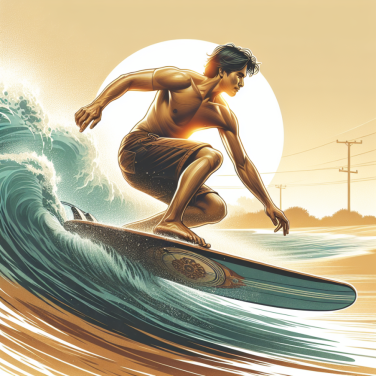Beyond the Basics: Advanced Techniques and Skills in BMX Riding
BMX, a thrilling sport full of adrenaline, gives you the power to push your boundaries and showcase your passion in a unique and stunning way. And once you've mastered the basics, it's time to move on to the advanced techniques and skills that will make you stand out in the field and create your signature style. These techniques are harder to perfect, require additional hours of training, but they are bound to make you shine brighter in the BMX world.
One of the most popular advanced techniques in BMX is manualing. Manualing is the ability to balance on the back wheel of your bike without pedaling. It's a trick that can be used to link tricks together in a combo while also aiding in technical riding. It's hard technique to perfect, and it requires total control over the bike, focus, and a lot of practice.
Another technique is the bunny hop, a back-bone of many BMX tricks. It gives you the ability to leap over obstacles. A successful bunny hop demands precise timing and body movements. It's not just about pulling the bike up; you have to manipulate your weight and movements effectively to get the needed height.
For those looking for a major adrenaline rush, you might want to learn how to perform an X-up. This technique requires you to jump your bike in the air, twist your handlebars 180 degrees crossing your arms, and then quickly return them back to original position before you land. It's a risky move that requires a lot of courage, strong wrists, and a firm grip.
The tailwhip is another fantastic trick to learn. It’s one where the rider jumps in the air, kicking the frame of the bike around in a 360-degree motion while remaining in the same spot, and then catches the bike mid-air to land. This trick is quite advanced and may take several practice sessions to perfect, but it's a spectacular trick to watch and perform, making it a favorite among BMX riders and enthusiasts.
Then, there's the 360, another classic BMX trick. It involves making a complete circle in the air. The trick is notable for its visual appeal and technical complexity. It necessitates complete control over the bike's movements and speed, in addition to remarkable patience to master.
Lastly, we can't disregard grinding, a skating trick adapted to BMX. It involves riding along an object, like a rail or ledge, with the bike's pegs rather than the wheels.
Read also:
Discover Your Inner Athlete: Identifying Which Soccer Player You Resemble Most
Understanding the Adrenaline-Fueled Sport: The Basics of BMX Riding
BMX riding is matched by few other sports in terms of its meticulous blend of skill, risk, and sheer adrenaline. Mastering the BMX necessitates a keen understanding of its central principles and characteristics, including its equipment, styles, and various techniques.
The origins of BMX or Bicycle Motocross trace back to Southern California in the late 1960s and early 70s, drawing influence from motocross racing. Since then, BMX has gained international recognition, becoming an official Olympic Sport in 2008.
Equipment is crucial in BMX riding. These bikes bear resemblance to their motocross counterparts in style, but they’re significantly smaller. A standard BMX bike is typically around 20 inches in size, but those intending to race may opt for a slightly larger model. One unique feature of the BMX bikes is the lack of a gear system, forcing riders to rely entirely on their skill and power to navigate challenging terrains.
BMX has evolved into several distinctive styles each engaging a different set of skills. There's BMX racing where riders sprint around a dirt track filled with jumps and turns in a competition to finish first. Freestyle BMX, meanwhile, focuses more on stunts and tricks, which can occur in street settings, parks, or vert ramps. Essentially, it's a form of expressive cycling that doubles as a daredevil sport.
Mastering BMX riding requires technical skill, physical stamina, resilience, and a good dose of courage. Specific techniques include bunny hops (jumping the bike off the ground), manuals (balancing on rear wheel), barspin (spinning the handlebars while airborne), tail whips (spinning the bike around the handlebar axis), and many more complex moves.
BMX riding, like other extreme sports, is not without its dangers. Riders are required to don helmets, knee pads, and elbow pads as mandatory safety gear. The sport demands attention to body conditioning and safe practices to minimize the risk of injury.
Exploring the thrilling world of BMX takes you through the evolution of a sport first inspired by motocross champs, now standing on its own, recognized worldwide for its raw excitement and required skill. But beyond the spectacle of death-defying stunts, competitive races, and stylish tricks, BMX riding embodies a culture that promotes resilience, creativity, and an undeniable sense of adventure.




